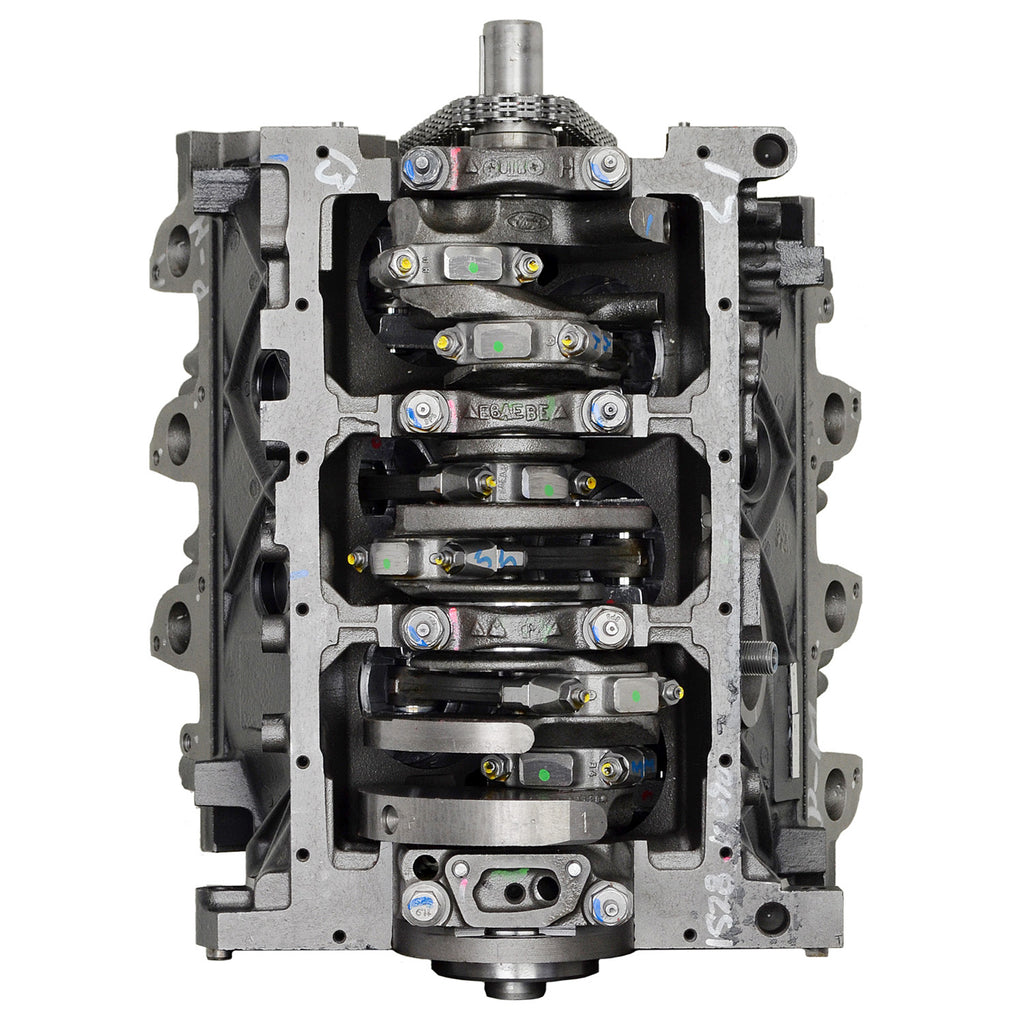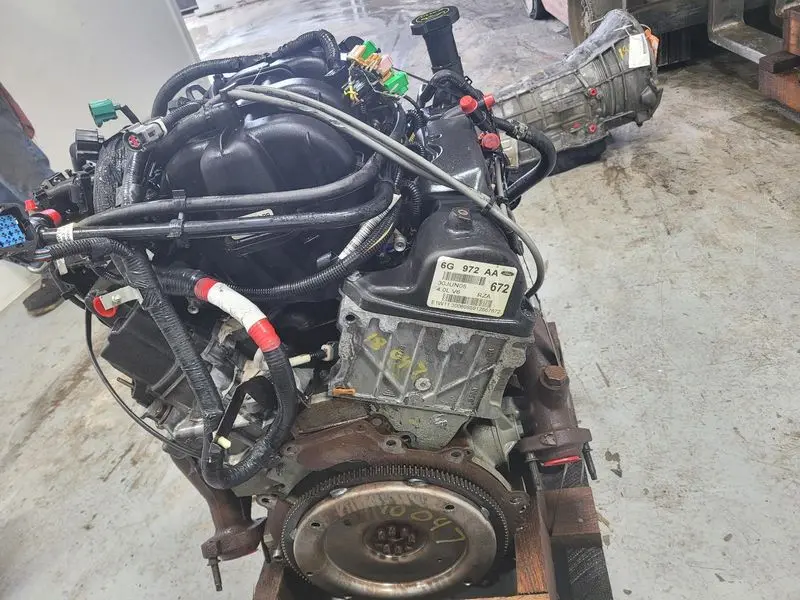How the 2.2 Ford Ranger Engine Stands Out for Durability and Power in Tough Conditions
How the 2.2 Ford Ranger Engine Stands Out for Durability and Power in Tough Conditions
Blog Article
Understanding the Fundamentals of Automobile Engines: Functions, functions, and kinds

Review of Automobile Engines
A vehicle engine functions as the heart of an automobile, transforming fuel right into power to push it onward. This detailed system consists of various elements that operate in unison to guarantee optimum efficiency and efficiency. The fundamental operation of a car engine entails the interior combustion process, wherein gas and air are mixed, fired up, and expelled to develop power.
The engine's layout can considerably affect its performance, gas effectiveness, and emissions. Trick elements include the cyndrical tube block, pistons, crankshaft, and camshaft, each playing an essential duty in the engine's overall function.
Along with these elements, engines often make use of various systems such as fuel injection, ignition, and cooling systems to boost efficiency and durability. Recognizing the fundamental mechanics of cars and truck engines is crucial for detecting problems and carrying out upkeep, inevitably adding to the lorry's dependability and performance in time.

Kinds of Auto Engines
Auto engines can be categorized into a number of kinds based upon their design, gas type, and operational concepts. 2.2 ford ranger engine. The most typical categories include inner burning engines (ICE), electrical engines, and hybrid engines
Internal burning engines, which can be additional separated right into gas and diesel engines, operate by sparking a fuel-air combination to generate power. Gas engines are commonly lighter and smoother, while diesel motor are extra fuel-efficient and offer greater torque.
Electric engines use electric energy stored in batteries to power an electrical motor, supplying instantaneous torque and no discharges during operation. As modern technology breakthroughs, electric lorries (EVs) are progressively becoming popular for their ecological benefits and lower running expenses.
Crossbreed engines integrate elements of both inner burning and electric engines, enabling versatile power resources and improved gas effectiveness. They can operate in different modes, utilizing either the gasoline engine, the electric motor, or both concurrently.
Each type of engine has unique advantages and disadvantages, affecting their application in different vehicle types and market segments, from compact vehicles to durable vehicles. Recognizing these types is essential for making educated choices relating to automobile choice and efficiency assumptions.
Engine Functions Discussed
Understanding engine functions is vital for realizing just how vehicles operate efficiently. At the core of any type of interior burning engine exists the basic procedure of transforming fuel right into power. This process starts with the intake stroke, where air and gas are drawn right into the combustion chamber. Following this, the compression stroke presses the air-fuel mixture, raising its temperature level and stress.
The ignition happens next, stiring up the mixture and developing a quick growth of gases. This pressure drives the piston down during the power stroke, which inevitably equates right into the rotational motion of the crankshaft. The exhaust stroke then eliminates the spent gases from the chamber, giving way for a new cycle to commence.
In addition to these key functions, engines also integrate systems that handle air conditioning and lubrication, ensuring optimum functional temperature levels and minimizing rubbing between relocating parts. This elaborate interplay of functions makes it possible for the engine to create the power essential for car propulsion while preserving effectiveness and dependability. Comprehending these features supplies valuable insight right into the complexities of auto engineering and boosts the capability to identify and attend to engine-related issues properly.
Trick Engine Attributes
Engine design incorporates a number of vital attributes that significantly affect performance, toughness, and performance. One of the most critical elements is the engine arrangement, which includes inline, V-type, and flat layouts. Each setup influences the engine's size, equilibrium, and power outcome, thus impacting total lorry dynamics.
An additional vital attribute is the engine variation, describing the overall volume of all cyndrical tubes. Bigger variations usually generate more power however may endanger gas performance. Engine materials likewise play a pivotal role; high-strength and lightweight products, such as aluminum and magnesium alloys, improve performance without including excessive weight.
The type of fuel injection system utilized-- such as direct or multi-port injection-- affects burning effectiveness and exhausts. Turbocharging and turbo charging are functions that boost engine efficiency by forcing read review extra air right into the burning chamber, increasing power result without significantly enhancing engine dimension.
Lastly, the presence of sophisticated engine administration systems optimizes fuel-air mix and ignition timing, adding to smoother operation and far better gas economy. Collectively, these attributes specify an engine's capacities, establishing the structure for its efficiency and longevity in an affordable vehicle landscape.
Upkeep Tips for Engines
Proper engine maintenance is important for making sure ideal efficiency and longevity, as overlooking routine treatment can lead to considerable problems down the line. To keep your engine successfully, start with regular oil adjustments, usually every 3,000 to 7,500 miles, depending on the kind of oil utilized. Fresh oil lubes engine parts, lowering friction and wear.
Furthermore, checking coolant levels is crucial to avoid getting too hot. Make certain that the coolant is covered up and remains in excellent problem to maintain reliable temperature level law. Frequently inspect and change air and gas filters, as clogged up filters can hinder air movement and gas delivery, compromising engine performance.
Additionally, take note of spark plugs and ignition systems. Defective or used spark plugs can bring about misfiring and lowered efficiency. Examining the battery terminals and connections for corrosion is also crucial, as a weak battery can impact engine starting.

Final Thought
In summary, a detailed understanding of car engines includes numerous types, functions, and crucial features that dramatically influence vehicle efficiency. Interior combustion engines, in addition to electric and hybrid options, demonstrate varied devices for energy conversion. 2.2 ford ranger engine. Recognizing the vital functions, such as consumption and exhaust cycles, along with critical engine attributes like arrangement and fuel injection systems, outfits car proprietors with the expertise required for reliable upkeep and operation, ultimately enhancing automobile longevity and effectiveness
A car engine offers as the heart of a lorry, transforming fuel right into mechanical power to move it onward. The essential operation of a cars and truck engine includes the internal burning procedure, in which gas and air are blended, stired up, and eliminated to create power.
Frequently replace and examine why not look here air and gas filters, as clogged up filters can prevent air flow and gas delivery, compromising engine performance. - 2.2 ford ranger engine
In summary, a thorough understanding of cars and truck engines incorporates various kinds, features, and vital attributes that significantly affect vehicle performance. Recognizing the vital features, such as consumption and exhaust cycles, along with vital engine features like setup and gas shot systems, furnishes auto proprietors with the knowledge essential for effective maintenance and procedure, eventually boosting vehicle longevity Your Domain Name and performance.
Report this page